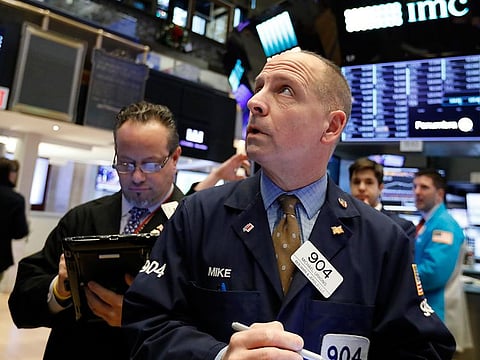This US stock regulator watches out for the small investor
But SEC’s Brett Redfearn is not winning over everyone with his call for reforms

It’s harder these days to find reasons for stocks to rise. But the recent 5,000-point market plunge, and seemingly daily swings, when consumers are still spending and the unemployment rate is at historical lows, has more and more people thinking that it’s not the economy that is broken but the market.
Treasury Secretary Steven Mnuchin blamed high-frequency traders and the Volcker Rule, which restricts trading by large banks, for the market’s volatility. Better Markets, a non-profit group that advocates for more market regulation and is not normally aligned with officials from the Trump administration, seems to agree.
The group has called on the Securities and Exchange Commission to start monitoring for signs the market is being impaired by new trading systems. “Computer-driven, high-frequency algo trading has been driving market drops, swings and volatility for too long. The damage to investors and our economy has been incalculable,” Better Markets CEO Dennis Kelleher said.
Even before the recent volatility, SEC Chairman Jay Clayton had linked the drought in initial public offerings to a perception that public markets were essentially rigged against “Mr. and Mrs. 401(k)”. Making markets appear more fair, Clayton has said, will bring back IPOs and the economic opportunity they create.
If there is a problem with the stock market, the person in charge of fixing it is a former political science graduate student who once led student efforts against nuclear waste and took a year off from college to travel the world with his guitar. Brett Redfearn was named head the SEC’s division of markets and trading in October 2017.
Since then, he has become, at least on Wall Street, one of the most divisive market regulators under President Donald Trump.
Investor advocates have hailed Redfearn, a former JPMorgan Chase & Co. executive who has long specialised in market structure, as the first regulator in years who puts individual investors first.
Officials from the main stock exchanges, though, have a different view of Redfearn. They contend Redfearn has little care for fairness and is just trying to rewrite the rules to boost the profits of his former employer and other large banks.
But even if Redfearn’s proposed reforms come with good intentions, some seem positive they will do little to address the market’s growing volatility or the lack of IPOs.
The issues that Redfearn is tackling have been around for a while. In mid-2009, Senator Chuck Schumer of New York called on the SEC to outlaw a technique, called flash orders, that some argued unfairly allowed certain traders to see the buy-and-sell intentions of others before the rest of the market.
It was only one of the techniques that high-frequency traders used, but the name stuck.
Redfearn seems intent on taking action. His most controversial proposal, which would affect the trading of hundreds of stocks for as long as two years, is a pilot programme that would limit the incentives — in the form of rebates — that exchanges pay to attract trades. Critics contend the system of access fees and rebates, for which the exchanges typically charge a stock buyer 30 cents for every 100 shares, and rebate as much as 27 cents of that fee to the seller, or vice versa — lead brokers, particularly those who cater to individual investors, to send their trades to exchanges that offer the highest rebates but not necessarily the best price.
The difference in price is likely cents or less, but that adds up on millions of trades, which is why many individual investors don’t notice.
A number of large pension funds and mutual fund companies support the pilot programme, which has been approved but has no official start date. Others say it’s unnecessary. Virtu Financial Inc., one of the largest high-frequency firms, argues it will be disruptive and that the rebates improve the prices that individuals receive, not the opposite.
Brokers say the rebates don’t alter where they send trades. The exchanges say they, like any other company, should have the right to price their products as they like. But at the very least, the access fees that are largely rebated seem like the equivalent of duct tape — a messy and incomplete solution to the real problem, which is that equity markets left largely alone have evolved into a complicated and fragmented mess.
The biggest question is whether any of these changes will make markets fairer. With Uber and other prominent private companies considering going public, the IPO market seems to be on the upswing.
Achieving a truly level playing field between average investors and professionals, who spend millions on data and computing power, is most likely an unrealistic goal. But for markets to appear fair, investors need to have a regulator who is putting in some effort seek it.
And whether Redfearn finds the right balance, it’s clear that he is looking. In the end, that could be the most important thing he does.
Sign up for the Daily Briefing
Get the latest news and updates straight to your inbox



